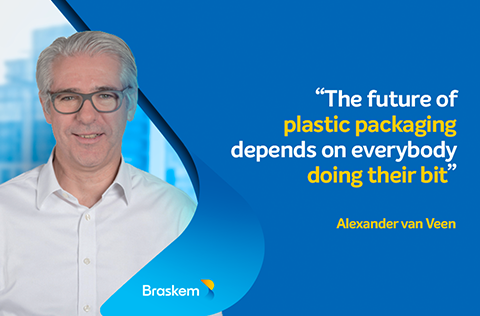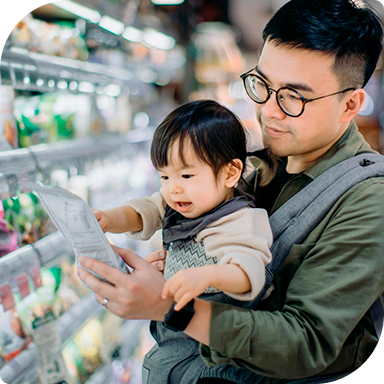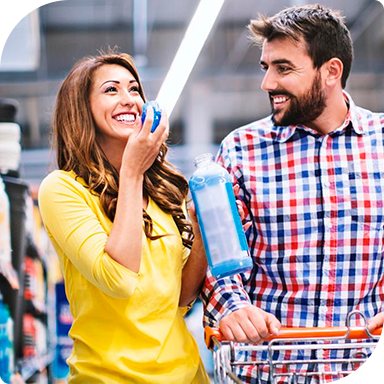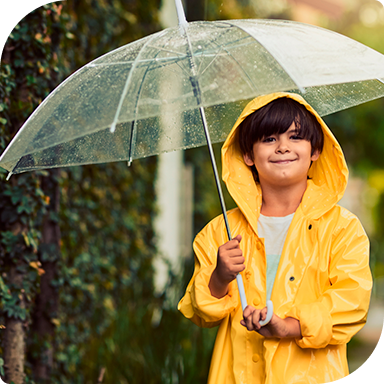The future of plastic packaging
By Alexander Van Veen - Braskem`s Commercial Leader and Managing Director Europe

Plastic packaging is in a kind of dichotomy: On the one hand, it is impossible to imagine our everyday life without it. Think how many times you handle plastics on a daily basis:it's in our homes and cars, sustaining our cities and protecting our food. For good reason: Scarcely any other type of material is as flexible and usable as plastic, especially for perishable foods and liquids. On the other hand, its reputation is steadily declining. Particularly packaging - many consumers complain about it and associate it with mountains of waste. It has come to represent a society that feels it can simply throw away its problems.
In many respects, the key advantage of plastic, its ubiquity, has become its undoing.
To overcome this dichotomy the industry must respond. I'm heartened by the way we have woken up and are investing in solving the key issues that we are facing. In my 30-plus years of experience in the plastics industry, I have yet to see such momentum, such a drive for innovation. Plastic packaging is reinventing itself right now.
As we experience this sea change, perhaps now is the right time to consider the scale of the challenge, and assess the current micro and macro trends of this development.
You can't talk about plastic packaging in any detail without first addressing the main factor which will have the biggest impact on its development: climate change. Our planet is facing its biggest ever challenge and everyone and every sector is responsible for mitigating the damage. Plastic packaging is no different.
While many may believe that climate change may drive significant changes for packaging, plastics may also be well-placed to contribute in positive ways. That's because the life cycle impacts of many plastics are already very good when compared to other materials. Whilst reduction of greenhouse gases is of course in focus, both in production and in subsequent recycling, plastics tend to score well against metal, glass and even paper. One of the main challenge for plastics is to move away from its current reliance on fossil resources (most plastics are made from oil) and to increasingly depend on renewable raw materials, such as recycled or biobased sources.
The other side of the coin is what happens to waste plastics. The leakage of these materials into the environment as a consequence of either bad design, poor waste infrastructure or littering is a huge problem, which has sparked much of the backlash against plastics. More research into the impact on biodiversity and human health are required, but the early signs aren't good. This is also what policymakers are aiming at, trying to "motivate" industry to develop new solutions by setting specific targets and potentially imposing penalties. Industry has a tremendously important role, but I don't believe it alone can solve the problem. The best product and process developments are useless if consumers still do not dispose of the packaging in a sensible manner.
The future of plastic packaging depends on everybody doing their bit: plastic producers incorporating more renewable raw materials into the system and reducing greenhouse gas emissions; brands and retailers placing fully recyclable packaging on the market and ensuring the corresponding waste infrastructure is in place to collect and sort it; consumers acting responsibly and recyclers finding innovative ways to increase capacity and quality. This represents a value chain working in harmony. This would be the circular economy in action.
But the perfect solution for these challenges and the future of plastic packaging has not yet been found. For this reason, there are various trends that build on the above-mentioned status quo and develop it further.
1. LCAs - Life Cycle Assessments
Life Cycle Assessment is the tool that allows you to assess and compare the impact of a product. Before it hits the shelves, a packaging item is the result of the work of 10s of different companies. With so many actors involved, it makes no sense to look only at the carbon footprint of one's own processes. LCAs stretch from the beginning of the chain all the way to its very end, giving a holistic view of how climate-neutral or damaging a product really is.
2. Incentivizing Consumers
As mentioned before, the most innovative and best processes to recycle are of no use if the consumer ends up disposing of the packaging in the wrong way. In some European countries, for example, there are standardized systems for the return of PET bottles. Other packaging, such as food deliveries or coffee-to-go cups, should be linked to a deposit system in the future as well. In my opinion, this is a good and important development, but this in turn has a strong influence on the production of plastic packaging.
3. Mono vs. Multi-Material Solutions
Deposit systems with PET systems currently show one of the highest recycling rates. It works so well because PET bottles are made of a single material. This is a goal that is generally strived for in other packaging. However, currently this is (still) difficult to implement since many specialized packages are made of different types of plastic. For this reason, in my opinion, it would be useful to develop solutions for multi-material products in addition to the development of mono-material solutions.
4. Rigid vs. Flexible Solutions
In recent years, more and more flexible plastic packaging has been developed, such as a pouch for soup. This development will be reversed in the future, as it has been determined that rigid packaging is easier to recycle. This shows that the development of plastic packaging is already bending and adapting to the experiences and requirements from recycling processes. Even if it means reversing a development that has already been initiated.
5. Intelligent Packaging
Plastic packaging is predestined for the next development step of packaging due to its flexibility: Intelligent packaging that can inform the consumer about the condition of the contents. For example, a tracer on the inside will cause a specific indicator to change color on the outside if the product has been improperly tampered with. In the future, this solution will be used for plastic packaging for food, but especially in medicine. In my opinion, this is the next important step in the evolution of plastic packaging.
6. Reusable Packaging/Unpacked Goods
A trend that can be seen increasingly these days and that results from the bad image of plastic packaging are products as well as entire stores that manage without plastic packaging. The customers use reusable containers, into which the desired quantity of the product is filled. This already works for basic foodstuffs such as flour, sugar, etc., but also for hygiene articles such as shampoo and liquid soap. On the part of the product manufacturers there are also increasing ambitions to get such refilling stations into the trade. However, not all problems have been solved yet: potential contamination or difficulties in billing the filled quantity are currently still hampering the commercial breakthrough. I think that such solutions will become established in special niches.
7. Waste Material as Feedstock
A very exciting trend, albeit as a transitional solution, is the use of waste material as feedstock. This does not make the products more recyclable, but it does reuse already used materials to create new plastic packaging. For example, Braskem uses utilized cooking oil as a raw material for plastic that can be used for packaging. This is not 100% circular, but transforms waste into new products.
These are the key trends for the next few years that I believe will have a major impact on the development of plastics - very specific, so-called micro trends, some of which are used more in niches.
Above these, in my view, are 3 macro trends that will have a holistic influence on the entire industry:
1. Circularity
Braskem's main focus is to achieve a circular economy: all raw materials and products used in a production cycle can be reused for the production of new products, all CO2 emissions can be compensated. This is a focus that the entire plastics industry will adopt and move towards. With all processes and innovations, companies will ask themselves, is the solution "circular", i.e. usable for CE, or not. Or is it, as with waste material as feedstock, a transitional solution towards that.
2. Focus on the End of Life of Plastic
The perspective in plastic production or in the development of new packaging is shifting. For many years the focus was on the production and the use of the plastic, now the focus is on the end of life of the resulting product: How can it be reused, what processes have to be in place, how do we as plastic producers get the plastic back as a feedstock for new products. From my point of view, this is a completely new perspective, but also a very important one.
3. Legislative Influence
Policy also plays a major role in plastics development, especially in Europe. The EU is currently discussing new specifications for the production of plastics, in which a certain percentage of renewable feedstock must be used. But also the brand owners may soon have to prove that they use recycled plastic or plastic from sustainable raw materials. If they fail to do so, penalties could be levied. A whole raft of measures looking at issues such as hazardous substances, phasing out microplastics and eco-design can be expected to come into force in the next few years - this will have a significant impact on the industry and all stakeholders in the supply chain.
The most important trend, however, from my point of view, is the collaboration of all stakeholders along a supply chain. Specifically, I am concerned with transparent communication and education among each other about the contents of plastic packaging, its use, and a shared focus on adding value to the end-of-life of each package. Only by working together we can continue to offer plastic and plastic packaging as the best solution and at the same time contribute to the reduction of climate change and littering of the planet.
News
More news
Braskem and Katoen Natie Partner on a Logistics Project in Singapore
![[JP] Braskem and Katoen Natie Partner on a Logistics Project in Singapore](/portal/europe/arquivos/listas/15762/capa.jpg?v=1)
[JP] Braskem and Katoen Natie Partner on a Logistics Project in Singapore

From Air to Plastics: Norsk e-Fuel and Braskem Partner to turn Captured Carbon into Long-Lasting Products

Accelerating the Transition to Renewables: Braskem's I'm greenTM bio-based Supports TE Connectivity's Sustainable Heat Shrink Tubing Innovation

With Braskem's I'm greenTM bio-based Polyethylene, Balsam Hill Made the World's First Plant-Based Plastic Christmas Trees


 Braskem Global
Braskem Global
 Braskem Idesa
Braskem Idesa
 Braskem USA
Braskem USA
 Braskem Europe
Braskem Europe






